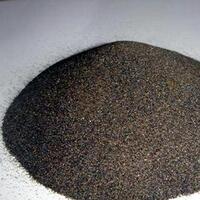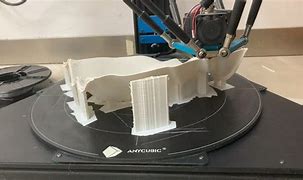**Squirt, Melt, Build: The Stuff That Makes 3D Printers Go Brrr**
(What Is The Material Used For 3d Printing)
Imagine a machine that can spit out a toy, a pizza, or even a house. Sounds like sci-fi? Thanks to 3D printing, it’s real. But here’s the kicker: none of it happens without the right materials. Let’s dig into the weird, wild, and sometimes delicious world of what 3D printers actually use to create… well, everything.
**Plastic: The OG of 3D Printing**
Most 3D printers start with plastic. Not just any plastic. Two types rule the roost: PLA and ABS. PLA is the eco-friendly option. It comes from cornstarch or sugarcane. It smells like candy when it melts. Plus, it’s easy to use, making it perfect for beginners. ABS is tougher. It’s the stuff LEGO bricks are made of. It can handle heat better, so it’s great for car parts or phone cases. Downside? It smells like burnt plastic. Open a window.
**Resin: For the Detail-Obsessed**
Want something smooth and crazy detailed? Resin’s your friend. This liquid turns solid under UV light. Jewelry makers and dentists love it. Ever seen a tiny model with eyelash-level details? Thank resin. But watch out—it’s messy, sticky, and needs gloves. Also, don’t drink it. (Seriously, it’s toxic.)
**Metal: When Plastic Just Won’t Cut It**
Yes, metal 3D printing exists. Titanium, stainless steel, even gold. How? Printers use lasers or electron beams to melt metal powder layer by layer. Jet engines, medical implants, and fancy custom watches often come from this. It’s not cheap, but neither is a spaceship part.
**Ceramics: From Coffee Mugs to Art**
Clay in a printer? Sort of. Ceramic filaments work like plastic but turn into pottery after baking. Imagine printing a vase and then glazing it like regular clay. Artists use this for wild sculptures. Your grandma’s teapot? Soon, it might be 3D-printed.
**Flexible Stuff: Bend It, Stretch It, Wear It**
Rubber-like materials let printers make shoes, phone grips, or even squishy prosthetics. These bendy filaments can stretch without breaking. Picture a custom-fit shoe sole printed just for your feet. Socks optional.
**Food: Because Why Not?**
3D-printed food isn’t just a gimmick. Chocolate printers exist. So do ones for pasta, pizza dough, or sugar sculptures. Hospitals even use pureed food printers for patients who need easy-to-swallow meals. It’s not MasterChef, but it’s fun.
**Concrete: Yes, Buildings Too**
Ever seen a 3D-printed house? Giant printers squeeze out concrete layers to build walls. It’s fast, cheap, and could solve housing shortages. Your future home might come from a printer the size of a warehouse.
**Weird Science: The Future Is Gooey**
Researchers keep pushing limits. Live cells for printing human tissue? Check. Recycled ocean plastic for eco-printing? Done. Some even experiment with moon dust for future space colonies. The rule here: if it can be squirted or melted, someone will try to print it.
(What Is The Material Used For 3d Printing)
So next time you see a 3D printer, remember—it’s not the machine that’s magic. It’s the stuff inside. From melted Lego goo to titanium dust, the materials make the dream work. And who knows? Maybe one day, your lunch, your shoes, and your entire house will all start as a spool of… something.
Inquiry us
if you want to want to know more, please feel free to contact us. (nanotrun@yahoo.com)

